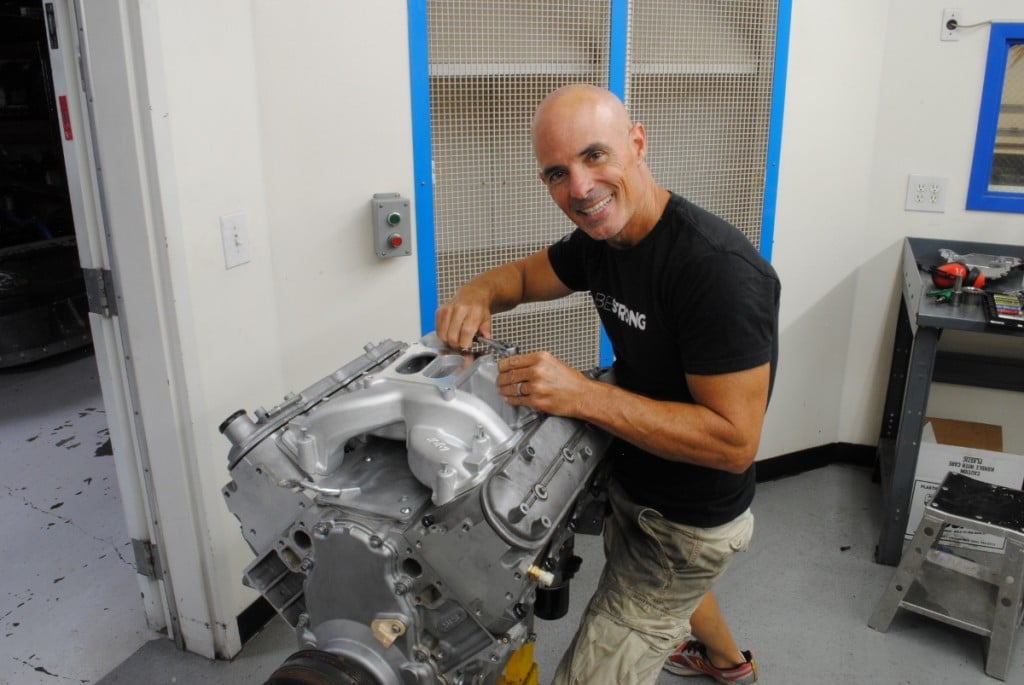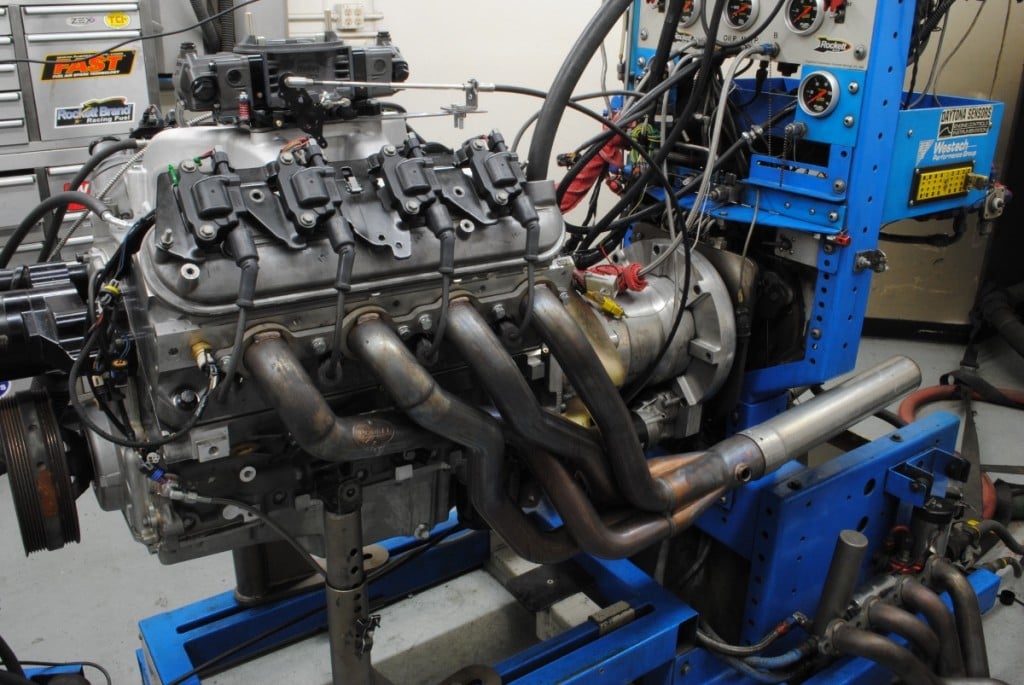
For those who think EFI is too expensive and complicated, we carbed and cammed this LS3 crate motor.
Word and Photos By: Richard Holdener
The performance world held its collective breath when the manufacturers first introduced electronic fuel injection. Sure, they softened the blow with those fancy feedback carburetors that adjusted the mixture based on readings from an oxygen sensor, but by then, the writing was on the wall for the trusty carburetor. Many thought the advent of modern fuel injection spelled the end of an era for performance enthusiasts. Given the sophisticated systems employed to run the new fuel-injected combinations, there would be no way to alter or improve performance, or so we thought.
By now, we understand fuel injection did not put an end to performance, and in fact, it can be argued that it not only continued a long standing tradition, but it greatly improved factory and even after market performance. Modern motors, like the LS and new LT family are head and shoulders better than their muscle-car counterparts, and so they should be.
Time and technology have indeed marched on, but that doesn’t mean modern fuel injection is the end-all, be-all for every application and (especially) every budget. For some, the sophisticated systems offer complexity and expense that just won’t suit their needs — or wants. For many enthusiasts, there is no better method of delivering the necessary fuel to a motor than the tried and true carburetor.
Truth be told, a modern carburetor is a marvel of both simplicity and sophistication. The simplicity comes in its installation and basic operation, but there is tremendous sophistication in its effectiveness and versatility. We’ve run the same carburetor on engines differing by more than 100 cubic inches without so much as changing a jet.
Basically, the modern carburetor operates much like the more sophisticated mass air meter employed on electronic fuel injection. Flow is measured, and the carburetor supplies a commensurate amount of fuel based on that flow. Carburetors have been around as long as the internal combustion engine itself, and from the looks of it, they are here to stay.
The popularity of the carburetor is without question, but that doesn’t mean it has to be applied to a motor originally equipped with one. Far and away the most popular performance engine family going is the LS platform, and for good reason. By all accounts, the LS is a worthy successor to the original (and legendary) small block. It has proven to be both powerful and affordable, thanks to use in millions of truck applications. Available in sizes ranging from 4.8 liters (293 cubes) all the way up to 7.0 liters (a big-block like 427), there is an LS to fit almost any performance need.
Given the popularity of both the carburetor and LS engine family, we decided it would be a good idea to combine the two for a quick dyno session. Though the carburetor can be applied to any of the available factory displacements, to say nothing of the many aftermarket stroker combinations (that can exceed 500 inches), we decided to apply carburetion to a popular GM crate motor. Enter the carbureted LS3.
The LS3 used for this build up came as a GM crate motor supplied by Gandrud Chevrolet. Originally offered from 2008-2103, the LS3 was rated by GM at 430 hp and 424 lb-ft of torque (436 hp and 428 lb-ft with optional exhaust); the LS3 was already plenty powerful. The problem for the carb contingent was the LS3 came equipped with injectors, a fuel rail, and intake designed specifically for fuel injection. This problem was easily solved with the installation of a dual-plane intake and carburetor from Holley.
The stock LS3 intake was replaced by the dual-plane, carbureted intake and 950 Ultra HP carburetor. The intake featured O-ring sealing, provisions for vacuum/IAT sensors, and bolted right to the factory LS3 heads. The dual-plane design promised plenty of torque production without sacrificing peak power, but the real power came from the cam swap.
The factory LS3 cam was the real limiting factor in terms of power production, so we replaced with a healthy stick from COMP Cams. The 281LRR cam offered a .617/.624 lift split, a 231/239-degree duration split, and 113-degree lsa. The cam would ensure that in addition to successfully running carbureted, the LS3 crate motor would produce exceptional power doing so.

Run with a set of Hooker 1 7/8-inch, long-tube headers, the carbed and cammed LS3 crate motor produced 538 hp at 6,500 rpm and 480 lb-ft of torque at 4,900 rpm. What street machine couldn’t use 538 hp?
The final modification that allowed us to successfully run the carbureted induction on our crate motor was the installation of the MSD ignition controller. The controller plugged right into the factory sensors and coil packs and allowed us to dial in any ignition curve.
To test the effectiveness of the carbureted crate motor, we plopped it on the dyno for testing. Having run this crate motor from Gandrud Chevrolet many times in the past, it was primed and ready for action. The 950 Ultra XP carb was spot on right out of the box; we tried dropping two jet sizes, but the change produced no power gains. After dialing in the timing, the cammed and carbed crate motor produced peak numbers of 538 hp at 6,500 rpm and 480 lb-ft of torque at 4,900 rpm. Torque production from the cammed crate was impressive, as the 6.2L managed to exceed 450 lb-ft from 3,700 rpm to 6,200 rpm.

Carbureted LS3 Crate Motor: Given the huge numbers to which we have become accustom, people forget just how much 500 hp really is, let alone 538 hp. A 500+ hp small block is a serious player on the street and even at the track. Upgraded with a COMP cam and Holley carbureted induction system, this build shows the factory-injected LS3 is perfectly happy catering to the carb contingent. Think what you would have to build to get a conventional small block to exceed 535 hp. All it took on the LS3 was the right cam, dual-plane Holley intake, and Ultra XP carburetor.
Dual-plane intakes excel at providing a broad torque production, and the COMP cam made sure the LS3 offered impressive power. If the results of this crate motor are any indication, carbs and cams make a killer combination.
Sources: ARP, Arp-bolts.com; COMP Cams, compcams.com; Gandrud Chevrolet, gandrud.com; Holley/Hooker, holley.com
















